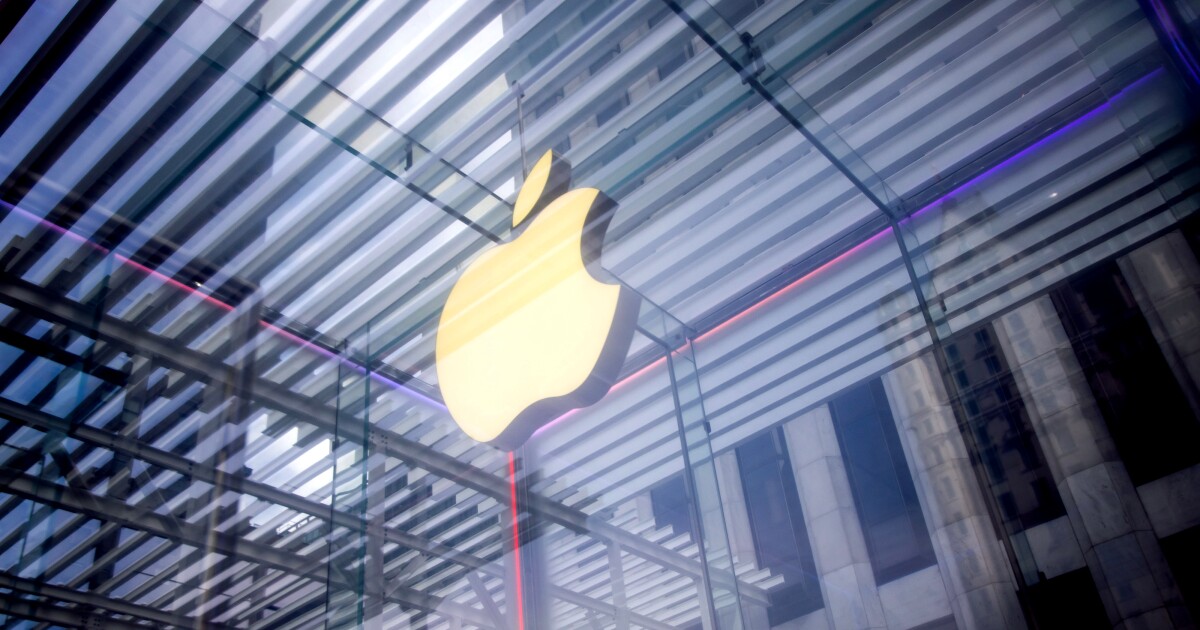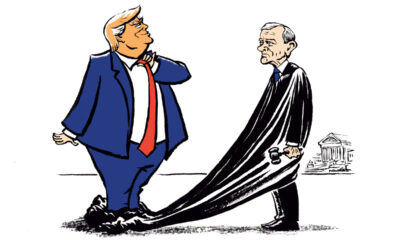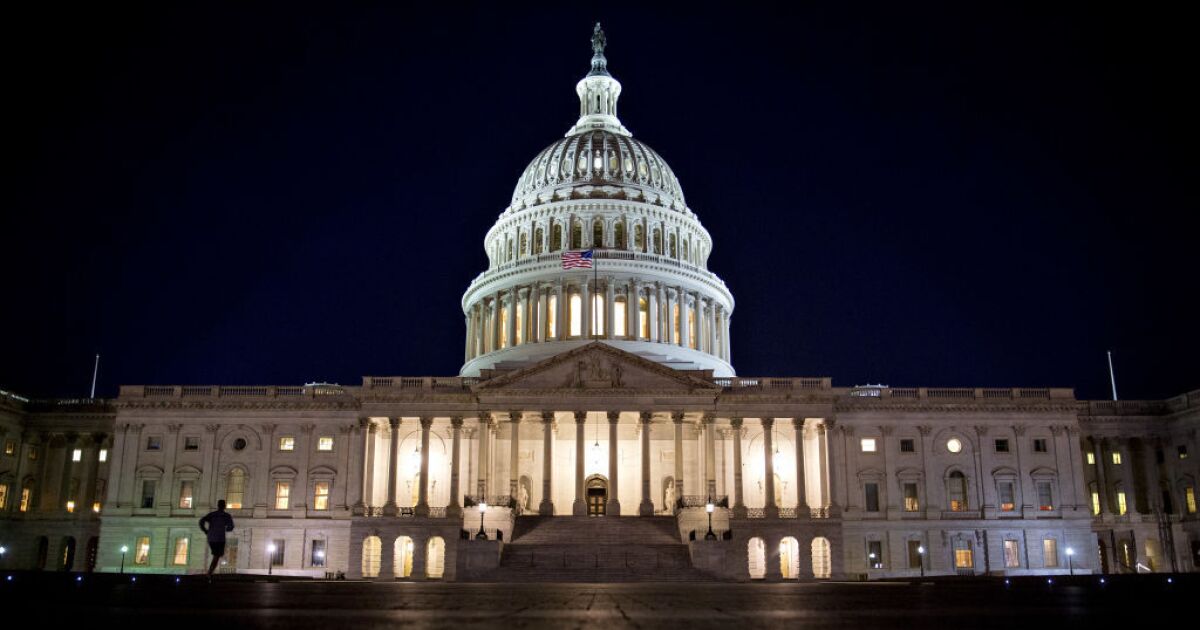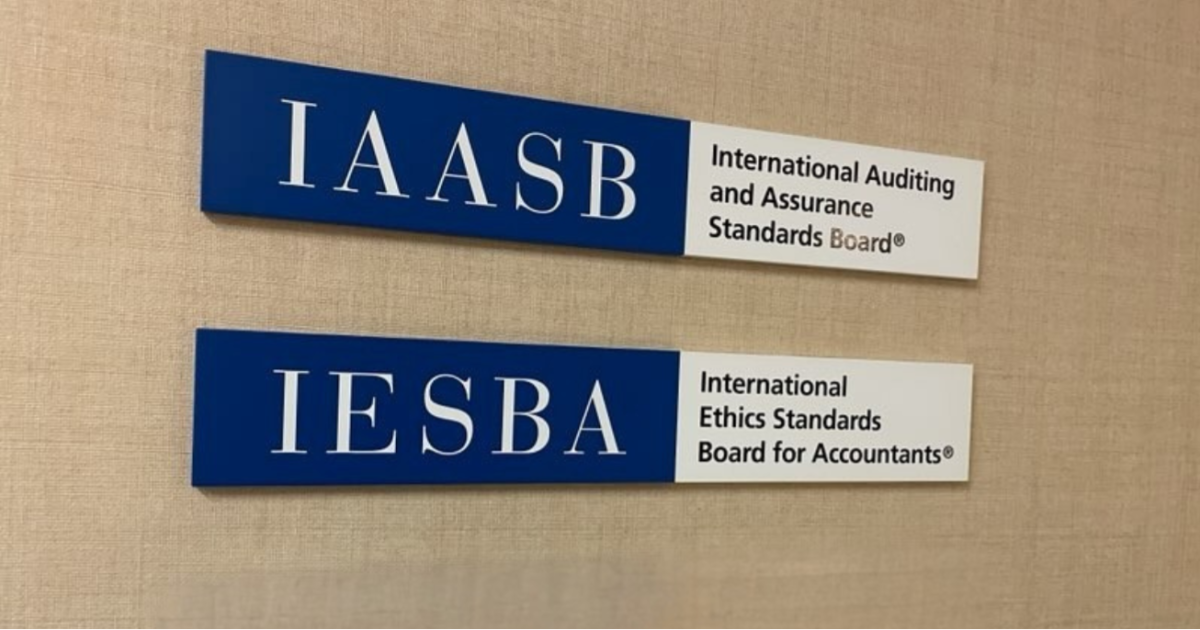From Apple Inc. to General Motors Co., corporate America is bracing for tens of billions of dollars in damages from Trump’s trade war — and that’s before most affected goods have landed.
Among U.S. companies that have disclosed financial projections so far, GM sees a $5 billion hit this year, while Apple expects $900 million in higher costs in the current quarter. Nvidia is taking a $5.5 billion charge to account for new export controls.
President Donald Trump’s administration imposed across-the-board tariffs on most imports and targeted some countries and industries for additional levies. Duties are as high as 145% on many Chinese imports, and Beijing retaliated with import taxes of 125% on American goods. Foreign-made steel and aluminum also face a 25% US tariff.
The preemptive warnings from these and other blue chips may vastly underestimate the overall hit to bottom lines. Many companies have yet to provide guidance, with some taking a wait-and-see approach. Others have foreshadowed the pain by widening expense ranges, pulling their full-year outlooks or warning price hikes will erode consumer demand.
Meta Platforms Inc., for instance, lifted its capital spending projection for the year by as much as $7 billion, blaming the change in part on higher-than-expected costs for globally sourced equipment.
“There’s just a lot of uncertainty around this given the ongoing trade discussions,” Susan Li, chief financial officer of the owner of Facebook and Instagram, said on a call with analysts.
The word “uncertainty” has become a go-to descriptor for many executives during quarterly financial results calls. The u-word has cropped up more than 6,000 times so far in those corporate calls this season — the most since the early days of the pandemic in mid-2020.
Dozens of companies have yet to report their latest earnings and answer analyst questions about the blow from tariffs, including Nvidia, Oracle Corp., Home Depot Inc. and Walmart Inc. Some industries, such as online advertising, will likely be impacted later in the year, and only if businesses cut their budgets to offset ongoing elevated costs or lower consumer demand.
Corporate managers are responding in a multitude of ways, including making attempts to shift production out of China and front load material orders ahead of anticipated price hikes.
Microsoft Corp. said sales of its Windows software and other products rose faster than expected as customers stocked up on inventory. Amazon.com Inc. accelerated some inventory purchases in the first quarter ahead of anticipated tariffs. Combined with unrelated costs associated with customer returns, the move lowered its profitability during the first quarter by roughly $1 billion.
“Obviously, none of us knows exactly where tariffs will settle or when,” Andy Jassy, Amazon’s chief executive officer, told analysts on a conference call.
Import models
GM, which imports vehicles from South Korea, Canada and Mexico, is among the biggest losers so far in Corporate America. The Detroit-based company and other carmakers are among the hardest hit, with a 25% duty on most imported vehicles. Separate duties on imported parts also are taking a toll on vehicles built at US auto plants.
Rival Ford Motor Co., which domestically produces 80% of the cars it sells in the US, said May 5 that it sees the duties reducing earnings before interest and taxes by about $1.5 billion this year. And motorcycle maker Harley-Davidson Inc. estimates tariffs could cost it as much as $175 million this year.
It’s not just American carmakers. Japan’s Toyota Motor Corp. said Thursday that US tariffs will cut its operating income by $1.3 billion in just the first two months since April 2, which Trump called his trade “Liberation Day.“
Other manufacturers are similarly feeling the pinch on profits from tariffs. Procter & Gamble Co. estimated current and proposed levies could add $1 billion to $1.5 billion to its annual costs. The consumer goods giant plans to counter that in part by raising prices on its products.
“It’s not immaterial,” P&G CFO Andre Schulten said on an April 24 earnings call with analysts.
Stanley Black & Decker Inc., which makes power tools and lawn mowers, estimated a gross tariff impact of $1.7 billion on an annualized basis. Even with supply-chain tweaks and price increases to lessen the blow, the company still expects a roughly 15% haircut to its earnings this year. That’s assuming that sticker shock doesn’t curb demand beyond the point at which the company can contain the damage through cost cuts.
“Price increases will be necessary in the U.S. market due to the current tariffs, and we have implemented a substantial increase in April,” Stanley CEO Donald Allan told analysts on an April 30 conference call. He added the company has “notified our customers that further price action is likely required if existing tariffs stay at current levels.”
Industrial impact
Aerospace and defense giant RTX Corp. said April 22 it’s bracing for an $850 million blow to operating profits, even with mitigation efforts. Honeywell International Inc., GE HealthCare Technologies Inc. and GE Aerospace each project a 2025 hit from tariffs on the order of $500 million before accounting for supply-chain changes and price increases.
Boeing Co. expects tariffs to increase its manufacturing costs by less than $500 million annually, including a 10% duty assessed on large components of its 787 Dreamliner that are made in Japan and Italy. The fallout could worsen if the European Union joins China in imposing reciprocal tariffs that make Boeing’s planes prohibitively expensive for local buyers.
3M Co. told investors April 22 that tariffs would cost it as much as $850 million a year — but only if it took no steps to blunt the impact. The diversified industrial product manufacturer said planned countermeasures will cut its earnings exposure this year to less than half that amount.
Danaher Corp., which makes life sciences and diagnostics equipment, told analysts on a April 22 call that a projected $350 million tariff hit will likely come down as it takes steps to offset the damage, such as adding surcharges and relocating manufacturing. And chemicals giant Dupont de Nemours Inc. is taking measures to reduce estimated tariff costs of $500 million down to $60 million, or about 10 cents a share.
“Our teams have been carefully analyzing ongoing global supply-chain dynamics, engaging with our customer and supplier base, and actively working on a number of tariff mitigation actions, including production shifts, sourcing alternatives, surcharges, and product exemptions,” CEO Lori Koch told analysts on a May 2 earnings call.
Passing along costs
GE Vernova Inc., the energy business that GE spun off last year, expects tariffs to add as much as $400 million in costs this year. The company plans to counteract that impact by leaning on inflation-protection provisions and change-of-law clauses in contracts to pass on some of the cost of tariffs to customers, while also cutting expenses and reorganizing its supply chain to lessen its dependence on China.
Medical instrument specialist Thermo Fisher Scientific Inc. and Johnson & Johnson each said they expect to lose $400 million to tariffs in 2025. Another drugmaker, Merck & Co., said tariffs will cost it $200 million this year.
Even food companies are getting dinged by the import duties. Hershey Co. said it sees $15 million to $20 million of tariff-driven costs in the second quarter. But as cocoa inventories wane, the chocolate- and candy-maker said it expects duties to drive up costs by as much as $100 million in both the third and fourth quarter before accounting for offsetting actions.


 Finance5 days ago
Finance5 days ago
 Finance6 days ago
Finance6 days ago
 Personal Finance1 week ago
Personal Finance1 week ago
 Economics1 week ago
Economics1 week ago
 Economics1 week ago
Economics1 week ago
 Personal Finance1 week ago
Personal Finance1 week ago
 Economics1 week ago
Economics1 week ago
 Economics1 week ago
Economics1 week ago











